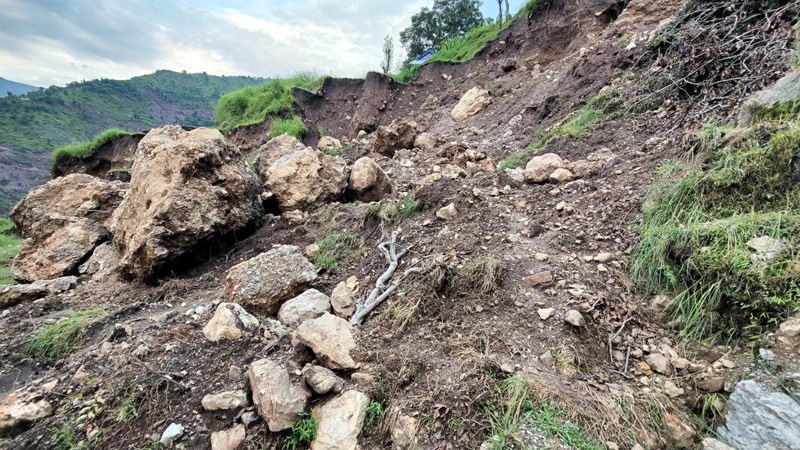Nature is beautiful in its natural form but devastating when it pays back with interest to its exploitation. The story of village Bassan is no different in the present context. A nallah flowed down a mountain range and over some time, jungle across slopes was cut down to make houses and agricultural land developed. No one cared for what kind of earth these mountains are made up of, decades passed by, and ultimately the whole village started sinking to the extent that houses developed huge cracks, landslides, boulders and muck came crashing down on homes, fields sank as the earth developed huge fissures. Luckily no life was lost but in all 36 families lost their houses and livelihood. A look at their houses and means of sustenance shows all of them to be poor, mainly Kashmiri and nomadic Gujjar families. The Administration came to the rescue with immediate tents and monetary help. Once again Indian Army’s Rashtriya Rifles did exemplary work to mitigate the sufferings of the victims. Money had been provided to some of the eligible affected families under SDRF and the rest of the so-called illegal encroachers have been left high and dry, again a lesson not to live dangerously on encroached land. As per the expert team of Geology and Mining, this village is no more liveable as such people have to shift to some other place and start their life afresh, onerous and disquieting. This is not the odd case, the recent subsidence of Joshimath and Karnaprayag are living examples of how foolishly we ignore expert panel reports and nature’s warnings and pay the price ultimately. The widening of NH-44 is also a classic example, we can cut thousands of trees and blast the mountains but the subsequent triggering of landslides and subsidence are irrevocable. NGT has already imposed penalties to the tune of crores on contractors for illegal debris dumping in Chenab and further warned NHAI that the project will be halted if environmental violations continue, the protection of the environment is prime.
Fundamentally there are stringent preconditions by the Ministry of Environment and Forests to clear any mega project, and complete case study reports of ecological and environmental impact but still rules are broken and the public has to pay the price. Jammu and Kashmir is in a high-risk seismic zone as such all projects have to be evaluated at their face value with utmost precautions. Thousands of trees have been felled during the excavation of such projects never to be replaced by fresh ones and with time nature pays back. There are instances of leakage and seepage from the main run-down water tunnels of hydroelectric projects causing immediate danger to many downstream villages. Chamba’sJharauta village is another classic case where Bajoli-Holi Hydro Electric Project has developed cracks and the village is now sinking. In the past, in our own Jammu and Kashmir on September 6 in 2014, at least 40 villagers were buried alive after the entire Saddal village in the Panchari Hills of Udhampur came under landslides following incessant rains. Lessons from all these are simple enough to understand, don’t mess with mother nature. Parochialism of any form is dangerous in the case of nature, vagaries have to be taken notice of and course correction has to be applied immediately. All our mega projects are in the high-risk seismic zone as such all DPRs must ensure utmost sincerity. Rickety projects will cause cringe situations afterwards.
Trending Now
E-Paper


